The following guide is a complete walkthrough for updating to or installing a fresh version of macOS High Sierra . It requires no experience and all of the basic installation and post-installation tools are available on Tonymacx86 .Table of Contents
Before You Begin
1. Register here at tonymacx86! If you don't have a user account, create one!
2. Get our latest UniBeast and MultiBeast tools from the downloads section.
3. Purchase a 16GB or larger USB drive.
4. Do a full backup of your system. We strongly recommend performing a full backup of your existing system using Carbon Copy Cloner. By doing this, you can always go back to your working installation.
UniBeast is a tool that creates a bootable installer out of your downloaded version of macOS. In order to start fresh, you'll need access to a functional computer running OS X Lion 10.7.5 or later. This is a requirement, as you need access to the Mac App Store to download macOS and create the installation drive. To start from scratch, booting the 10.6 Snow Leopard Retail DVD directly, check out iBoot + MultiBeast.
Existing Clover users may do a direct update to macOS High Sierra by simply running the Install macOS High Sierra app as normal Mac users would. Follow these steps: Update Directly to macOS High Sierra .
STEP 1: Download macOS High Sierra
The full operating system is a free download for anyone who has purchased Mac OS X Snow Leopard, Lion, or Mountain Lion or has a Mac preloaded with OS X Mavericks, Yosemite , El Capitan , or macOS Sierra . Download the Application from the Mac App Store using your Apple ID on any Mac or functional computer running OS X 10.7.5 or later.
1. Open Mac App Store
2. Log in with your Apple ID
3. Download macOS High Sierra
The Application Install macOS High Sierra will appear in /Applications.
STEP 2: Create a Bootable USB Drive with UniBeast
Take a deep breath and take your time- this is pretty simple, but it's easy to miss things if you rush. Follow each step to the letter.
1. Insert the USB drive
2. Open /Applications/Utilities/Disk Utility
3. Highlight the USB drive in left column
4. Click Erase button
5. For Name: type USB (You can rename it later)
6. For Format: choose Mac OS Extended (Journaled)
7. Click Erase then Done
8. Download and run UniBeast
9. Click Continue, Continue, Continue, Continue, Agree
10. At Destination Select, choose USB and click Continue
11. At Select OS Installation screen choose High Sierra and click Continue
12. At Bootloader Options screen choose UEFI Boot Mode or Legacy Boot Mode. UEFI Boot Mode is recommended for 7/8/9/100/200 Series CustoMac desktops and all UEFI capable systems. Legacy Boot Mode is recommended for 5/6 Series CustoMac desktops and all BIOS based systems.
13. (Optional) At Graphics Configuration screen choose the appropriate graphics option for your system and click Continue.
14. Verify installation options, then click Continue, enter password and click Install
UniBeast will now create the bootable USB drive. The process will only take about 10 minutes, depending on system and drive speed. Do not unplug or stop during this time.
15. Drag MultiBeast to your completed USB drive.
Clover Note: UniBeast delivers basic bootloader support based on our testing on recommended CustoMac systems. For further bootloader customization, download and run the official Clover package. Advanced users may also compile Clover by downloading the full source.

STEP 3: Recommended BIOS Settings
If you're installing on a recommended CustoMac desktop with AMI UEFI BIOS, the options are simple. For other systems make sure to set your BIOS to Optimized Defaults, and your hard drive to AHCI mode. Here are standard AMI UEFI BIOS settings for Gigabyte AMI UEFI BIOS, Gigabyte AWARD BIOS, ASUS AMI UEFI BIOS, and MSI AMI UEFI BIOS.
1. To access BIOS/UEFI Setup, press and hold Delete on a USB Keyboard while the system is booting up
2. Load Optimized Defaults
3. If your CPU supports VT-d, disable it
4. If your system has CFG-Lock, disable it
5. If your system has Secure Boot Mode, disable it
6. Set OS Type to Other OS
7. If your system has IO Serial Port, disable it
8. Set XHCI Handoff to Enabled
9. If you have a 6 series or x58 system with AWARD BIOS, disable USB 3.0
10. Save and exit.
STEP 4: Install macOS High Sierra
You're almost done! All you need to do is boot from the USB drive and install! For best results, insert the USB in a USB 2.0 port.
1. Turn on the computer
2. Press the hotkey to choose boot device (F12 for Gigabyte motherboards, F8 for ASUS motherboards, F11 for ASrock motherboards)
3. Choose USB
4. At Clover boot screen, choose Boot OS X Install from Install macOS High Sierra
5. When you arrive at the Installer, choose language.
If you have issues reaching the installer, you can use spacebar on boot screen to enter alternate boot modes such as verbose and safe mode. For more instructions on entering boot flags see Clover Basics and Switching Advice.
6. For a new installation of macOS, you MUST erase and format the destination drive according to the following steps before continuing.
a. In the top menu bar choose Utilities, and open Disk Utility
b. Highlight your target drive for the High Sierra installation in left column.
c. Click Erase button
d. For Name: type High Sierra (You can rename it later)
e. For Format: choose Mac OS Extended (Journaled)
f. Click Erase
g. Close Disk Utility
7. When the installer asks you where to install, choose High Sierra b. Highlight your target drive for the High Sierra installation in left column.
c. Click Erase button
d. For Name: type High Sierra (You can rename it later)
e. For Format: choose Mac OS Extended (Journaled)
f. Click Erase
g. Close Disk Utility
8. Upon completion, the system will automatically restart.
9. (Optional) Prevent APFS file system- default to HFS
Some users may prefer HFS file system and want to install without converting the system disk to the new default APFS file system. To this end, we've created a script called No-Convert which is included when creating your bootable USB installer using UniBeast . Running that script in Terminal will prevent automatic APFS file system conversion. Skip this step to default to APFS.
a. Press the hotkey to choose boot device (F12 for Gigabyte motherboards, F8 for ASUS motherboards, F11 for ASrock motherboards)
b. Choose USB
c. At Clover boot screen, choose Boot OS X Install from Install macOS High Sierra again
d. After the installer completely boots, In the top menu bar choose Utilities, and open Terminal
e. Type the following:
f. Reboot
10. Press the hotkey to choose boot device (F12 for Gigabyte motherboards, F8 for ASUS motherboards, F11 for ASrock motherboards)b. Choose USB
c. At Clover boot screen, choose Boot OS X Install from Install macOS High Sierra again
d. After the installer completely boots, In the top menu bar choose Utilities, and open Terminal
e. Type the following:
Code:
/Volumes/Image\ Volume/No-Convert
11. Choose USB
12. At the Boot Screen, choose High Sierra
13. Complete macOS installation. The system will automatically reboot.

STEP 5: Post Installation with MultiBeast
MultiBeast is an all-in-one post-installation tool designed to enable boot from hard drive, and install support for Audio, Network, and Graphics. The installation is complete, but the drive isn't bootable yet. Boot from the USB again, this time choosing High Sierra .
1. Press the hotkey to choose boot device (F12 for Gigabyte motherboards, F8 for ASUS motherboards, F11 for ASrock motherboards)
2. Choose USB
3. At the Boot Screen, choose your new High Sierra installation.
4. Complete macOS setup
5. Open and run MultiBeast
6. If this is a fresh installation, click Quick Start. UEFI Boot Mode is recommended for 7/8/9/100/200 Series CustoMac desktops and all UEFI capable systems. Legacy Boot Mode is recommended for 5/6 Series CustoMac desktops and all BIOS based systems.
7. Choose the appropriate audio and network options for your system:
8. Click Customize for further options
9. Click Print or Save to back up your configuration
10. Click Build then Install
If using a GeForce GTX 1050, 1050 Ti, 1060, 1070, 1070 Ti, 1080, 1080 Ti, TITAN Pascal, and TITAN Xp 'Pascal' graphics card or NVIDIA GeForce GTX 750, 750 Ti, 950, 960, 970, 980, 980 Ti, and TITAN X 'Maxwell' graphics card, macOS High Sierra graphics drivers are not natively supported. Alternate NVIDIA drivers are required.
11. (Optional) Download and install Alternate NVIDIA Graphics Drivers
12. Reboot
Yay! You now have a fully updated bootable version of macOS High Sierra on your CustoMac! And a super handy USB rescue drive. It's easy to get frustrated, but don't give up! If you get stuck, there are many users with similar hardware in the tonymacx86 Forum to provide support.
Thanks to all of the hard working developers, hackers, and testers all over the world without whom this guide would never have been possible.
Troubleshooting and Optimizations:
After you've completed the guide, things such as HDMI audio and iMessage may not work automatically. The list below should serve to fully optimize your system after initial setup. This list will be updated.
Update Directly to macOS High Sierra
Clover Basics and Switching Advice
An iDiot's Guide To iMessage
Before You Install Audio
Quick Fix: 200 Series/Kaby Lake Audio
[README] Common Problems in 10.13 High Sierra
[README] Common (some unsolved) Problems in 10.12 Sierra
[Guide] Intel IGPU HDMI/DP audio (Sandy/Ivy/Haswell/Broadwell/Skylake)
AppleHDA HDMI Audio [Guide]
[Guide] Native Power Management for Laptops
macOS Native CPU/IGPU Power Management
Solving NVIDIA Driver Install & Loading Problems
CustoMac Desktop USB Fixes - OS X 10.11+ Reference
Create a Clover Test USB Using UniBeast
How to Enter/Edit Boot Flags in Clover
How to Edit Clover config.plist
How to Mount EFI Partition
How to Set Clover to Automatically Boot System Drive
[GUIDE] Remove extra Clover BIOS boot entries & prevent further problems
OS X Configuration, Tuning & Utility Tools
How To Show Hidden Files in Finder
[Guide] Airport - PCIe Half Mini v2
Continuity and Handoff Capable Apple Mini Cards + PCIe and mini-PCIe Adapters
Laptop Compatibility
[READ ME FIRST!] Graphics Setup & Troubleshooting
The Basics
Alternate NVIDIA Graphics Drivers
NVIDIA releases alternate graphics drivers separately on the web for each build of macOS. These are different from the drivers Apple ships as standard, and should be considered experimental. In the past, the drivers have been known to solve OpenCL issues with certain applications, as well as providing better native GPU power management for certain devices. These drivers are currently the only method to get full acceleration for GeForce GTX 1050, 1050 Ti, 1060, 1070, 1070 Ti, 1080, 1080 Ti, TITAN Pascal, and TITAN Xp 'Pascal' graphics cards and NVIDIA GeForce GTX 750, 750 Ti, 950, 960, 970, 980, 980 Ti, and TITAN X 'Maxwell' graphics cards. There are no current Macs with these cards, so support is absent natively in macOS.
https://www.tonymacx86.com/threads/...s-high-sierra-10-13-6-387-10-10-10-40.255913/
Clover Bootloader Credits
UniBeast contains and delivers files from the Clover EFI Bootloader project. For more information and sources used see Clover EFI bootloader. Clover v2 is open source based on different projects: Clover, rEFIt, XNU, VirtualBox. The main is EDK2 latest revision.
Clover Note: UniBeast delivers basic bootloader support based on our testing on recommended CustoMac systems. For further bootloader customization, download and run the official Clover package. Advanced users may also compile Clover by downloading the full source.
Clover Developers:
Slice, with help of Kabyl, usr-sse2, jadran, Blackosx, dmazar, STLVNUB, pcj, apianti, JrCs, pene, FrodoKenny, skoczy, ycr.ru, Oscar09, xsmile, SoThOr, rehabman…
Source code credits:
Intel, Apple, Oracle, Chameleon, rEFIt and Xom.
Clover Source and Downloads:
Sourceforge: Clover






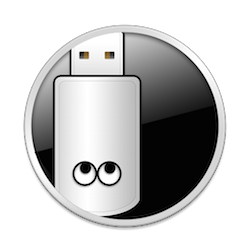


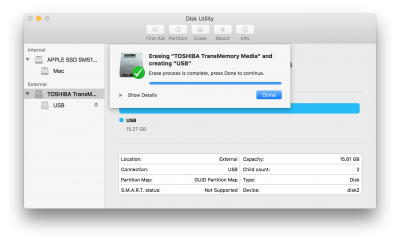



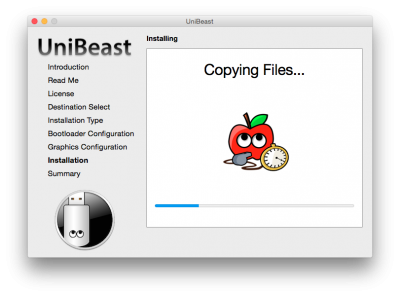




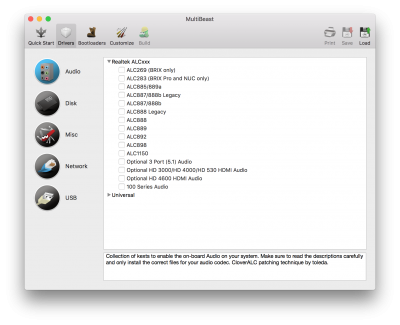
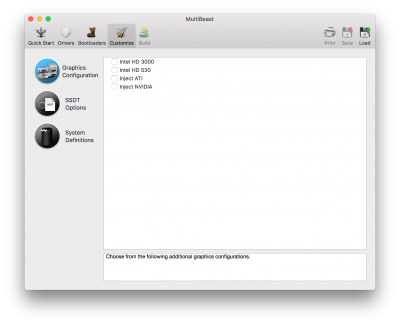
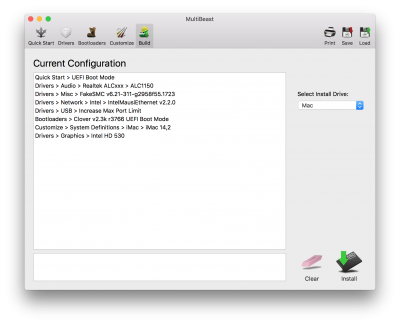

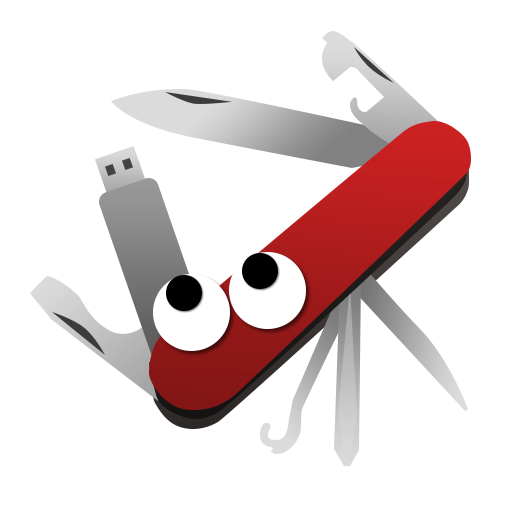
Post a Comment